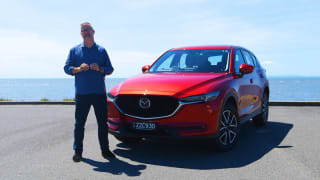
Mazda CX-5 2017 review
Mazda is currently enjoying a series of successes that's envied by almost every other car company in Australia, with a number of its models striking a real chord with Aussies.
Browse over 9,000 car reviews

The RAV4 set the standard for the medium-size SUV market before there even was one, with just compatriots Honda and Suzuki to deal with. Since its first generation way back in 1994, the RAV4 has become such a fixture on our roads.
It's nearly 2018 and the RAV4 is well into its fourth generation while most of its competitors can only claim to be in their second. The last few years has seen the ever-present Toyota lose its grip a little, and so Toyota waved the specification wand at the RAV4 to help it keep up the pace in a market with more competitors than a "Shout Expletives At Donald Trump" competition.
| Toyota RAV4 2018: GX (2WD) | |
|---|---|
| Safety rating | |
| Engine Type | 2.0L |
| Fuel Type | Regular Unleaded Petrol |
| Fuel Efficiency | 7L/100km |
| Seating | 5 seats |
| Price from | $25,960 |
The RAV4 GX is the entry-level and you can have it with three engines - a 2.0-litre petrol, a 2.5-litre petrol and a 2.2-litre turbo-diesel. You can have a manual or auto unless you pick the 2.5, which is auto-only. Strictly speaking, the 2.0's auto is a CVT and drives only the front wheels, whereas the big-banger 2.5 and the turbo-diesel are all-wheel drive.
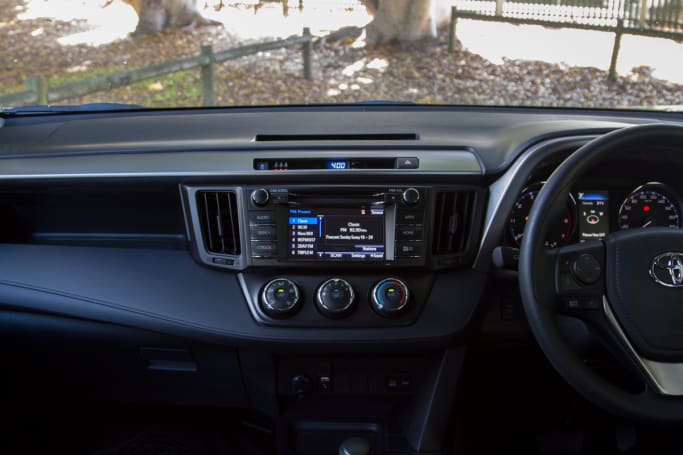
I had the 2.2-litre turbo-diesel automatic for a week. For $41,100, a sturdy $2350 more than the 2017 model, you get 17-inch steel wheels, dual-zone climate control, a six-speaker stereo with a 6.1-inch touch screen and DAB+ radio, reversing camera, sat nav, front and rear parking sensors, auto LED headlights and auto wipers, active cruise control, cloth trim and a space-saver spare.
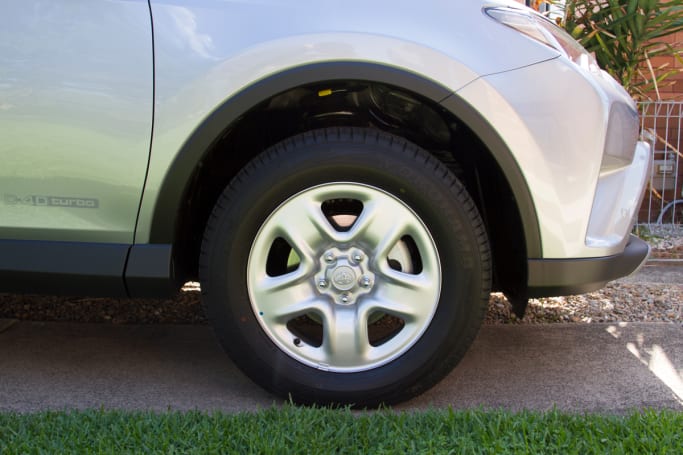
New for the 2018 model is standard sat nav and a the advanced safety gear previously only available on the top-of-the-range Cruiser. Our car also had the full-size spare, a $300 steel wheel under the boot floor.

A lot has changed in 23 years, including Toyota's consumption of bravery pills. While it's not an especially courageous design, the RAV is the sharpest and most handsome it has ever been. To be completely fair, the RAV has usually been a bit more interesting than most Toyotas, but this one is sharp and well-judged, clearly linked to the C-HR and newer Kluger models.
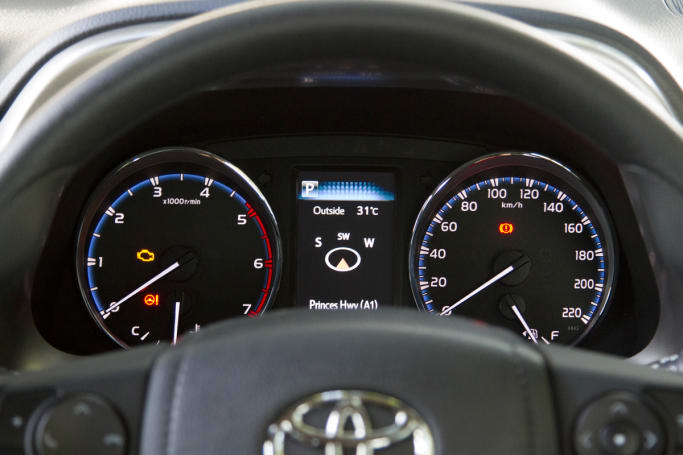
It manages to look very under-wheeled with the steel rims and therefore looks higher than it really is, which is a shame, because it's an otherwise handsome design. The front end is particularly well-executed and gets better with familiarity.
Thankfully, it goes without the awful bonnet scoop of past diesel RAV4s, too.
Here in the cheaper seats, it's a bit bleak. The RAV's interior design is already looking a little dated but you can't argue with its functionality. It's quite grey and plasticky here in the GX but there's no shame in the cloth trim, which if you ask me isn't available in enough cars.
The RAV is a spacious machine, with good headroom and legroom for both front and rear passengers. It's not too high that you have to consciously climb in and you can fit three kids across the back without drama.
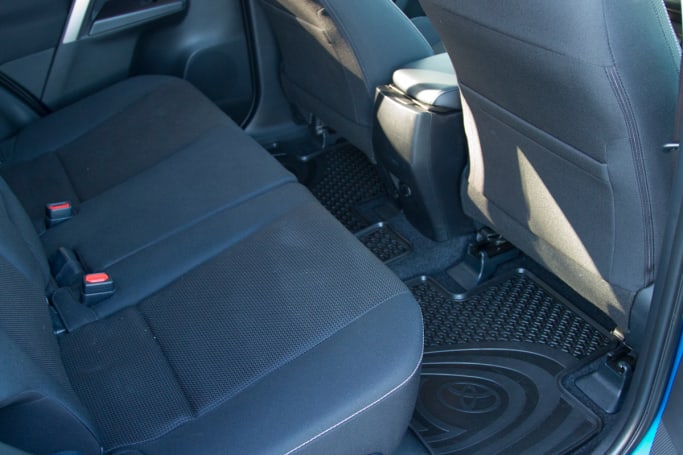
Front and rear passengers each score a pair of cupholders, bringing the total to four, matched by the bottle holder count.
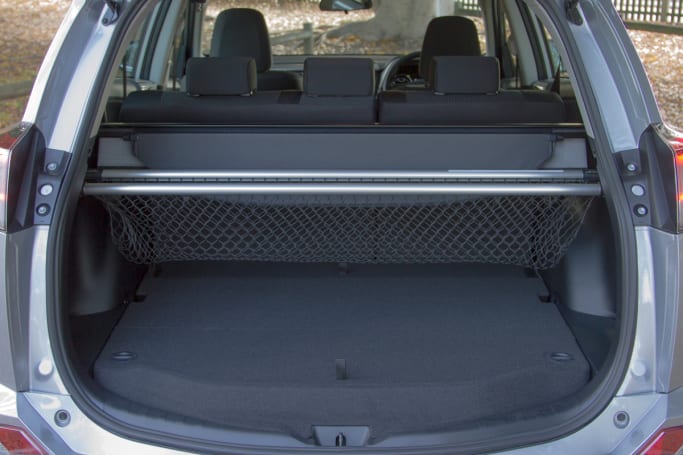
Boot space starts with a pretty decent 550 litres and with the 60/40 split fold seats dropped forward, ends up at a whopping 1760L.
I know Toyota fans are fond of engine codes, so I can tell you that the diesel RAV4 is equipped with a 2AD-FHV 2.2-litre four-cylinder turbo-diesel developing 110kW and 340Nm.
The GX diesel is a reasonably hefty 1635kg and can tow 1200kg braked and 750kg unbraked.
Toyota's combined fuel figure is listed at 6.7L/100km which is a little way off the 8.7L/100km I managed in a mix of suburban and highway driving. To be fair, the highway average was showing an indicated 6.2L/100km, which is pretty close to the claimed figure.
Stepping out into the suburbs, the diesel RAV is a noisy beast. Most oil-burning medium SUVs manage to keep a lid on the racket of a diesel but the Toyota's is loud and proud. Low-rev clatter, noisy on start-up, this is old school.
Once you get going, though, the engine improves and by the time you're in the cruise zone, it's a happy camper. Only when you go for an overtake does it again invade the cabin with more noise than is probably absolutely necessary.
It is undeniably torquey, though, meaning a fairly relaxed drive. It's not a particularly sprightly thing, so if there is turbo lag, you don't really notice it. The diesel RAV doesn't really respond positively to a flattened throttle, so a gently-as-she goes approach ensures solid progress.
Which is probably just as well, because the ride and handling is a bit wooden. My view on this caused a bit of tension in Casa Anderson because my wife didn't agree. Well, I say tension, she just told me I was wrong. However, if you approach a corner at anything much higher than pensioner-on-the-way-to-the-bowlo speed, expect less than stellar steering and chassis response. The ride isn't all that flash, either, struggling to keep up with a dud road, the rear seemingly stiffly sprung. It's not unsettling and never, ever bad, but the RAV isn't up to the challenge the way a CX-5 or Tucson is and certainly not the similarly-priced VW Tiguan.
Basic Warranty
3 years / 100,000 km warranty
ANCAP Safety Rating

The RAV leaves its Japanese factory with seven airbags, ABS, stability and traction controls, auto high beam, forward collision warning, front AEB, sway warning, lane-keep assist, three top-tether anchors and two ISOFIX points.
It received a five-star ANCAP rating, the highest available, in 2016.
Much of the safety package was previously an option, but is now standard across the whole range.
Toyota offers a three-year/100,000km warranty and servicing happens every six months or 10,000km.
Toyota's lovably simple capped-price servicing ensures you won't pay more than $240 per service on the diesel engine, $60 more than on the petrol. The scheme runs for the first three years/60,000km of the car's life.
Roadside assist starts at $78 per year.
The diesel GX doesn't appear to be especially good value because it probably isn't. A $41,000 car with steel wheels and a cloth interior (even though I like it) is really pushing it on the value front. Added to that the lack of engine features, like stop-start, and a media system from the 21st century, you have to wonder where the money has gone. Wonder no more - it's all in the safety gear, which as a package is hard to beat at this price level.
For not much less, though, you can have the mid-spec GXL petrol and have mostly the same experience along with the now-standard safety tech... and a set of alloy wheels.
| Vehicle | Specs | Price* | |
|---|---|---|---|
| GX (4X4) | 2.5L, ULP, 6 SP AUTO | $23,430 – 28,930 | 2018 Toyota RAV4 2018 GX (4X4) Pricing and Specs |
| GX (2WD) | 2.0L, ULP, 6 SP MAN | $19,470 – 24,640 | 2018 Toyota RAV4 2018 GX (2WD) Pricing and Specs |
| GXL (4X4) | 2.5L, ULP, 6 SP AUTO | $26,070 – 32,230 | 2018 Toyota RAV4 2018 GXL (4X4) Pricing and Specs |
| Cruiser (4x4) | 2.2L, Diesel, 6 SP AUTO | $35,530 – 42,350 | 2018 Toyota RAV4 2018 Cruiser (4x4) Pricing and Specs |
| Price and features | 6 |
|---|---|
| Design | 7 |
| Practicality | 7 |
| Under the bonnet | 7 |
| Efficiency | 7 |
| Driving | 7 |
| Safety | 8 |
| Ownership | 7 |
$16,989
Lowest price, based on 527 car listings in the last 6 months